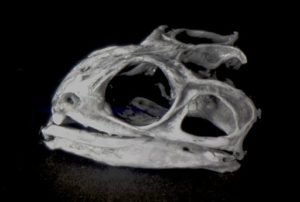
Dinosaur lovers can thank Isolde McGeorge, an animal caretaker at the Chester Zoo, in Chester County, United Kingdom, for overseeing care of two pre-dinosaur eggs until hatching. The eggs were hatchlings of a reptile from a species known to have existed before the dinosaurs.
The tuatara is extinct in the wild everywhere except New Zealand [where protected by the New Zealand Environmental Protection Authority].
A lizard-like reptile which survived the demise of the dinosaurs and now lives only in New Zealand has given birth for the first time in captivity outside its homeland – in an incubator at Chester Zoo.
If you thought it was difficult for pandas to breed in captivity, spare a thought for tuataras. They take 20 years to reach sexual maturity, come into breeding condition once every four years, and seem to live in perpetual slow motion – which is not such a problem if your life expectancy is 120 years.
However, after four decades of trying, Chester’s specialist keeper Isolde McGeorge can now claim to be Britain’s first midwife for the tuatara, an ancient reptile that flourished on almost every continent 220 million years ago, until that is it became extinct everywhere except New Zealand.
At the end of last year, the first tuatara hatchling emerged from its egg after an incubation period of 238 days, lovingly – if nervously – supervised by Ms McGeorge, 58, who has been trying to breed this enigmatic species at Chester ever since she began looking after them in 1977.
“I’ve had a long and fruitful career at the zoo, including the birth of Komodo dragons, but nothing is going to top this. It has always been one of my goals to breed tuataras, and now we’ve got there after watching this egg for every spare moment,” Ms McGeorge said.
“Tuataras are notoriously difficult to breed, and it’s probably fair to say that I know that better than most as it has taken me 38 years to get here,” she said.
Chester’s specialist keeper Isolde McGeorge can claim to be Britain’s first midwife for the tuatara (Steve Rawlins)
“It’s taken lots of hard work, lots of stressful moments and lots of tweaking of the conditions in which we keep the animals along the way – but it has all been very much worth it,” she added.
Although tuataras look like lizards they actually belong to a separate reptilian order called the Rhynchocephalia which were once dominant on land until all but one species, tuataras, died out. A curious feature of their anatomy is a “third eye” in the centre of their forehead which is no longer used for vision but may have some role in detecting ultraviolet light.
“Tuatara lived before the dinosaurs, they lived with the dinosaurs and they survived after the dinosaurs had died out. They really are a living fossil and an evolutionary wonder,” Ms McGeorge said.
Read the rest of this story at www.independent.co.uk.
Photo attribution: This tuatara skull from Leeds University was contributed by Lizardperson (Own work) [CC BY-SA 3.0 (http://creativecommons.org/licenses/by-sa/3.0)], via Wikimedia Commons
The above photo is captioned, “Skull of the tuatara showing true diapsid skull condition.” Wikipedia discusses the diapsids as a clade of the reptile class of animals.
To examine a side and top view drawing of a tuatara skull, and read a brief description of its place in the reptile class, visit page 4 of this article.
To see a video about the tuatara breeding program at the Aukland Zoo, visit the next page.



